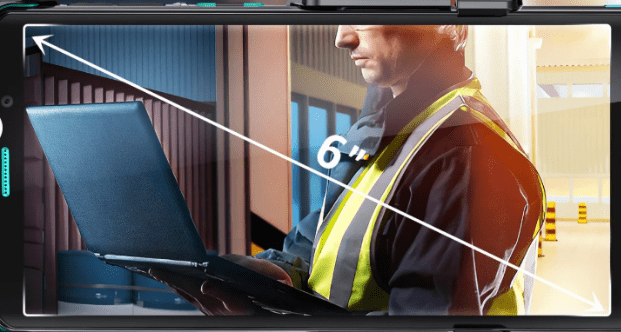Non-Destructive Testing (NDT) techniques help evaluate material, component, or system properties without causing any damage to the original part. In the aerospace industry, where safety and reliability are paramount, NDT plays a crucial role in ensuring the integrity of aircraft components.
Aerospace materials are subjected to extreme conditions, including high stress, temperature fluctuations, and corrosive environments. These demanding conditions can lead to material degradation and the development of defects, which can compromise the safety and performance of aircraft. NDT solutions offer a valuable tool for identifying and characterizing these defects, allowing engineers to take corrective action and prevent potential failures.
NDT Techniques for Aerospace Materials
The aerospace industry uses various NDT techniques to assess the quality and integrity of materials and components. These techniques provide valuable insights into the internal structure, material properties, and potential defects, ensuring the safety and reliability of aircraft.
#1 Radiographic Testing (RT)
Radiographic Testing (RT) uses penetrating radiation like X-rays or gamma rays to create images of the internal structure of materials. In the aerospace industry, RT helps inspect various components like castings, forgings, and welded joints. Analysis of the radiographic images helps engineers detect internal defects like voids, cracks, and porosity, which can compromise the component’s structural integrity.
#2 Ultrasonic Testing (UT)
Ultrasonic Testing (UT) uses high-frequency sound waves to detect defects within materials. A transducer emits ultrasonic waves into the material, reflecting the waves to the transducer upon encountering a defect or interface. Technicians can analyze the reflected waves to determine the location, size, and orientation of defects.
In the aerospace industry, UT can help inspect various components like turbine blades, engine components, and aircraft fuselages. It is particularly effective for detecting surface and subsurface defects like cracks, delaminations, and corrosion. Additionally, UT can be used to measure the thickness of materials, which is critical for assessing the remaining life of components.
#3 Eddy Current Testing (ECT)
Eddy Current Testing (ECT) is a non-destructive testing method that uses electromagnetic induction principles to detect defects in conductive materials. An alternating current is passed through a coil, generating an electromagnetic field.
Eddy currents are induced in the material when this field is brought into contact with a conductive material. In case of defects like cracks or voids, the flow of these eddy currents can be disrupted, leading to changes in the electromagnetic field.
These changes can be measured to detect and characterize defects. In the aerospace industry, ECT helps inspect components like tubing, wires, and heat exchangers. It is particularly effective for detecting surface and near-surface defects like cracks, corrosion, and material variations. Additionally, ECT can be used to measure the conductivity and permeability of materials, providing valuable information about their properties and conditions.
#4 Magnetic Particle Inspection (MPI)
MPI detects surface and near-surface defects in ferromagnetic materials by magnetizing the material and then applying a ferromagnetic powder to its surface. The powder particles are attracted to areas of magnetic flux leakage caused by defects, making them visible to the inspector.
In the aerospace industry, MPI is used to inspect components like gears, shafts, and turbine blades. MPI is relatively simple and cost-effective and is especially useful for accessing particularly in areas that are difficult to access with other NDT techniques. However, MPI is limited to ferromagnetic materials and may not be suitable for detecting deep subsurface defects.
#5 Thermal Imaging
Thermal imaging or infrared thermography, is a non-destructive testing technique that uses infrared radiation to detect temperature differences on the surface of a material or component. An infrared camera captures the thermal radiation emitted by the object and converts it into a visual image. The thermal image analysis can reveal areas of elevated temperature, which may indicate defects or anomalies.
In the aerospace industry, thermal imaging helps detect issues like overheating components, thermal stress, and structural damage, especially in aircraft fuselages and wings, where traditional inspection methods may be time-consuming and difficult. Thermal imaging can also help monitor the thermal performance of aircraft systems like avionics and hydraulic systems.
NDT and Material Characterization
Apart from detecting defects, NDT techniques can help characterize material properties and conditions. This assessment of material behavior under different loading conditions helps predict their remaining life. Here’s how:
Material Property Measurement
NDT techniques prove useful in determining the mechanical properties of materials, including tensile strength, yield strength, and hardness. For instance, ultrasonic techniques help measure the velocity of sound waves through a material related to its elastic modulus. The measured values of reference data help engineers assess the material’s mechanical properties and identify any degradation or anomalies.
NDT can be used to monitor material degradation and fatigue life. Periodic inspection of components using techniques like ultrasonic testing and eddy current testing helps track changes in material properties to identify potential failure mechanisms. This allows for timely maintenance and replacement of components, reducing the risk of catastrophic failures.
Residual Stress Measurement
Residual stresses are internal stresses that remain in a material after it has been subjected to manufacturing processes, such as welding, machining, or heat treatment. These stresses can significantly affect the mechanical behavior of a material, leading to premature failure. NDT techniques like X-ray diffraction and neutron diffraction can be used to measure residual stresses in materials.
Corrosion Detection and Monitoring
Corrosion is a major cause of material degradation and failure, particularly in aerospace applications where materials are exposed to harsh environments. NDT techniques can detect and monitor corrosion, allowing for early intervention and preventive measures.
Visual inspection, eddy current testing, and ultrasonic testing are commonly used to detect surface and subsurface corrosion. Techniques like electrochemical impedance spectroscopy can be used to assess the corrosion rate and predict the remaining life of a component. With effective corrosion monitoring programs in place, engineers can also significantly reduce the risk of corrosion-related failures and extend the service life of aerospace components.
NDT and Additive Manufacturing
Additive Manufacturing (AM) has revolutionized how products are designed and manufactured. However, the complex nature of AM processes often leads to defects like porosity, lack of fusion, and dimensional inaccuracies. NDT plays a crucial role in ensuring the quality and reliability of AM components.
NDT for Quality Assurance
Once the AM process is complete, NDT techniques are used to assess the quality of the final product. RT is commonly used to detect internal defects like porosity and lack of fusion. An analysis of the radiographic images can uncover areas of concern to determine material suitability.
UT is also used to detect surface and subsurface defects, such as cracks and delaminations. A combination of RT and UT can help comprehensively asses the component’s quality. Dimensional inspection techniques like coordinate measuring machines (CMMs) are used to verify the accuracy of the component’s geometry.
In-Process Monitoring
To improve the quality and efficiency of AM processes, NDT techniques can be integrated into the manufacturing process itself. In-process monitoring allows for real-time detection of defects and process anomalies, enabling corrective actions to be taken immediately.
Acoustic emission (AE) is a promising technique for monitoring the AM process. By listening to the acoustic signals emitted during the process, engineers can detect the occurrence of defects, such as cracks and delaminations.
Thermal imaging can also be used to monitor the temperature distribution during the AM process, identifying potential hotspots and thermal stress concentrations. The combination of in-process monitoring and post-processing NDT can significantly improve the quality and reliability of AM components.
Conclusion
NDT plays a critical role in preventing failures and extending the service life of aircraft in the aerospace industry. As the aerospace industry continues to evolve, NDT will remain a vital component of the engineering and manufacturing process.
Ongoing research and development in NDT are essential to keep pace with the increasing complexity of aerospace materials and structures. New techniques and technologies are constantly emerging, offering improved sensitivity, accuracy, and efficiency. By investing in R&D, the aerospace industry can continue to push the boundaries of what is possible and ensure the continued safety and reliability of aircraft.









